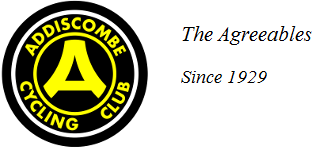Hallo all readers.
I like tostart here new to avoid overlapp in questions.
I start first with a question and info we forwarded to Andrew Coggan.
Hey Tok watch for typos , asI write the same toanybody ( no re-read)
Here we go:
Here the next question t Andrew C.
We just finished avery nice point to point discussion between Mc Intosh and Noakes.
Mc Intosh the Father of the peripeheral governor model versus Noakes (father of the Central governor model)
The question what works really isstill open with many points going towards T. Noakes view rather than the peripheral interpretation of fatigue.
Both had very different views , but both had very nice argumentations.
McIntsoh just desperatly tried to avoid the most critical nquestion,who and where his ideas may be controlled .
Now that is not the point of the question.
Interesting was that both agreed,that in "critical" intensities (intensities where we may expect some body reactions from training.(functional and or structural) the physiological systems (controlled either peripheral or central) will change by a given fixed physical workload, depending on duration and intensity and how often we do it.
Example :
You bike with a fixed wattage close to a physiological limitation . ( respiration limitation , cardiac stroke volume limitation, glucogen stroage limitation) and the duration is in a time frame, that the above limitations willget "fatigued" or emptied ) the same wattage willchange the respond from this person.
In other words. :
The first 30 min as an example you may have enough glucose towork on that intensity , but due to the steady demand of ATP production, this energy delivery system willrun low or close to empty.
Now the body will "shift" into another way to delivery the ATP and therefor will prodcue another stimmulus (stressor ) to the body.
If we like to maintain the same physiological stimmulus we may have todrop in wattage.
Both used the very clear example of heat, as the body will try to maintain the core temperature. Due to the increase inthe work to cool down the body has toshift certain energy towards temperature control and this energy willbe now not anymore available for actuall wattage performanceand wattage will drop.
If we deny this situation andpush the same wattage the bdoies system has toreact by increasing HR and other system to defenjd the core temperature.
This than will not work and temp will increase and by a certain temp the body either will run into sever (heat stroke)problems and or the cellular systems (peripheral) or the central systems (brain willstep in to save your life.
Summary :
Fixed HR in "critical" intensities may cause a change inphysiological response , due to the bodies situation of adjusting steady from a not always steady energy delivery pool, as with increased duration this pool may start toget low on substrate and other still available delivery system may have tojump in for further performance.
Now depending on the speed of recovery ( re-loading) of the energy substrate and or re-building of overloaded structurelike mitochondria as one of the examples) the next workout by the same critical wattage intensity may be already different due tothe above steps. ( not fully recovered, not cooled down yet and so on)
Soifa physiological system tries tostay in a specific intensity zone ( believed to be relevany for certainstimmulation and reactions ) wehave to re-adjust the physical output.
Noakes had the nice example from TT in cycling , where people go out somewhat too fast and than re-adjust very soon , as the 350watts ,they started outwasnotsustainable ( feeling or knowledge) and ifthe temp is very high ( higher than usual)they even willdrop lower ,as350watts would be far to much above the performance under this conditions.
Summary here. 350 wattage indifferent temp are not the samestress on the physiological system and depending on the situation may be one day 90 % of max under heat conditions , but under normal temp it may be only 80 % of max.
In botj cases RPE is the same 350 watts in heat may feel like 370 watts in norm.temp In both cases wewill seethesame or close tothe same HR and SV and CO and rectal temp ( nice examples from Noakes)
But asmentioned it is with different watts and same physiological intensity.
If under the heat the cyclists would have pushed 370 watts , the temp would have risen , HR up ans so on and either the peripheral or the central governor will shut him down.
So the question to Andrew C is:
Howdoyou respond to this two gentelmann when discussing sma e wattage is always the same physiological stress ?
Now back tothe question by TOK ,whether I could explain some definitions and ideas.
Answer. NO
Question : why ?
There are too many ideasand definitions out therealready .
Suggestion: why do wenot try , that Iask a question and than we can get answers and find a common language instead ?
Let's try:
Question , / Answer
AT in some literature (Kindermann, Hollmann,Hettinger ,Liesen ) means aerobic threshold
ANT means ANaerobic threshold
As definition AT + 2 mmol lactate
ANT 4 mmol lactate
And than a full ideas of different degrees on tangents against the lactate curve.
Some chnaged than to IAT = individual aerobic threshold
and IANT Individual ANaerobic threshold
So lets stop here: Questions ?
1. What is on this forum what?
2. Once this is clear , how dowefind this AT and ANT or the IAT and IANT ?
Based on this we can question andanswer back to have the same language.
I hope this works out and wecan find a common ground toobjectively use experience and scienceto find simple and possible ideas of individual workouts.
Answer and reaction to TOK's suggestion
1 post
• Page 1 of 1
1 post
• Page 1 of 1
Who is online
Users browsing this forum: No registered users and 4 guests
